Girls Day: The Best Hinamatsuri Treats!
Linh Le
Posted on February 15, 2023
Share:
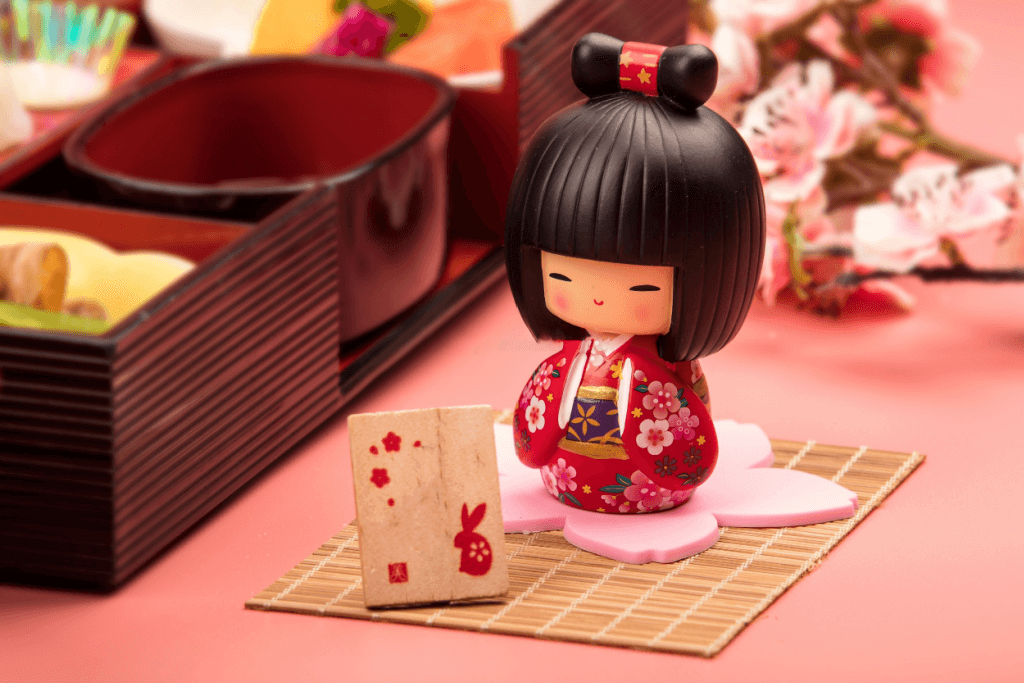
Girls Day, or Hinamatsuri, is a popular holiday celebrated during the early spring. It is also known as the “Doll Festival,” where families pray for the good health of the young girls in their families.
Hinamatsuri is a Japanese holiday held annually on March 3rd, also known as “Girls Day” or “Doll Festival.” Girls Day celebrates all girls under ten and prays for their health. A complimentary holiday, Children’s Day, observed on May 5th, is also a holiday in Japan for boys.
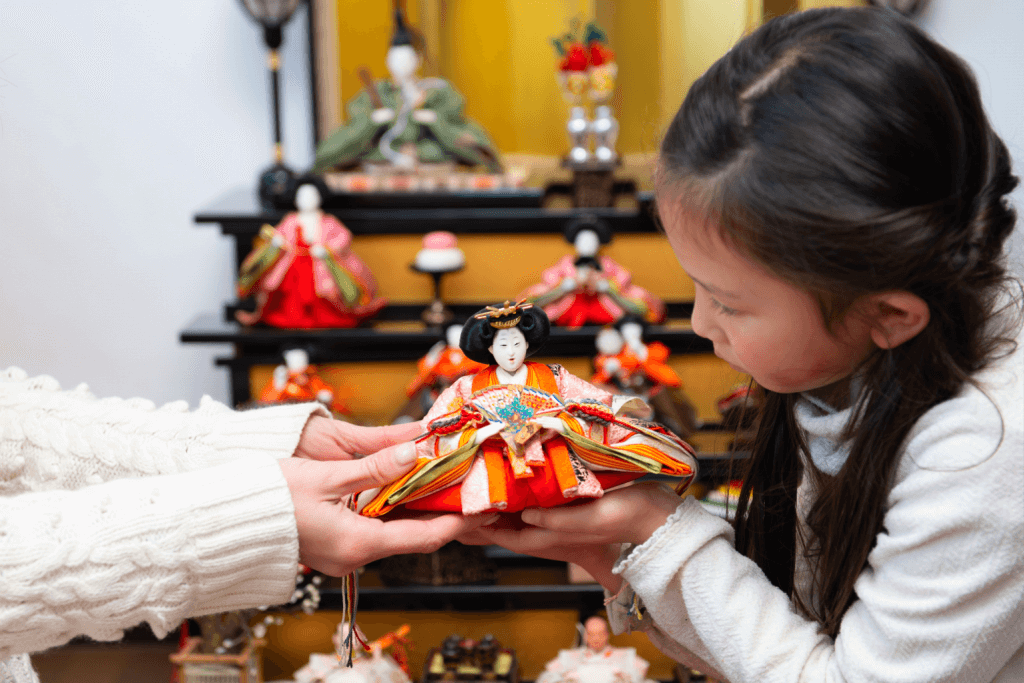
Japanese families with young daughters would place a set of traditional dolls known as Hina-ningyo (Hina dolls) on their daughters’ beds as a custom. Families usually put them on a five to seven-story-high shelf, and they can be pretty elaborate.
These Hina dolls depict the Emperor and Empress of Japan and musicians and servants dressed in Heian-era attire. They intend to keep bad luck at bay and bring good fortune to girls. The Hina dolls arrive around the middle or end of February and remain until the end of March 3rd.
The Origins of Girls Day: Hinamatsuri
There are various theories about where Hinamatsuri originated, but it is supposed to have begun in China in about the third century. It then made its way to Japan, where it became a part of the Heian tradition over a thousand years ago. Because of infectious diseases and a lack of adequate healthcare systems, many more children died back then than now.
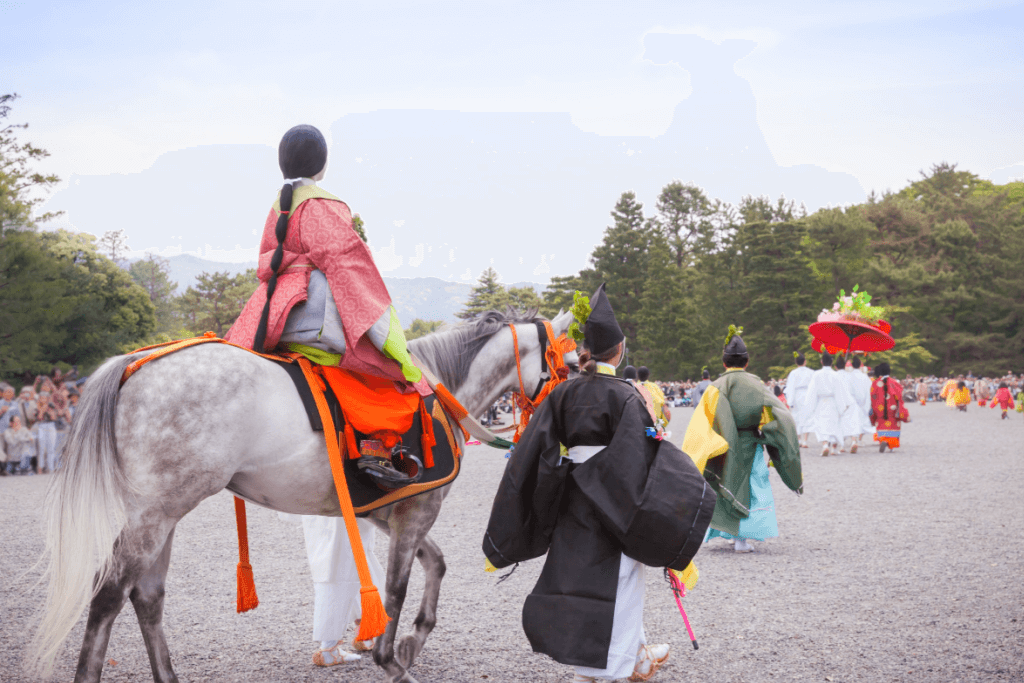
People constructed tiny paper dolls and dropped them into the river in the hope that they would protect their children from bad luck. Only during the Edo period (1603-1868) did Japanese people begin to display Hina dolls in their houses.
Why not indulge in some traditional Japanese treats this spring? Sakuraco is worth checking out! Every month, Sakuraco delivers delicious Japanese snacks, teas, and sweets from Japan so you may enjoy them at home.
Hina Dolls-Girls Day Decorations
Hina dolls are sacred talismans frequently passed down from generation to generation. They are displayed in the house’s most excellent room for a few days throughout the holiday season. When a wealthy family has a baby girl, the parents would often buy her a set of dolls to prepare her for Hinamatsuri.
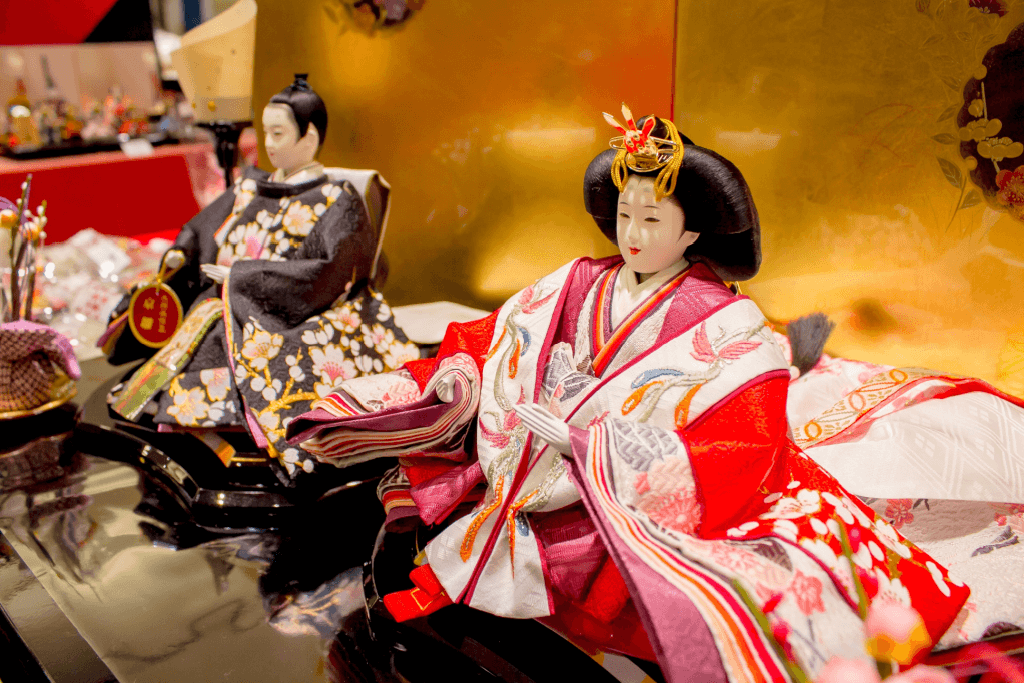
A complete Hina doll set includes 15 dolls dressed in traditional silk clothing. Dairibina, the Emperor and Empress, live on the top floor. On the left is the emperor, and on the right is the empress. There is a yellow paper screen with two lamps with patterns on either side.
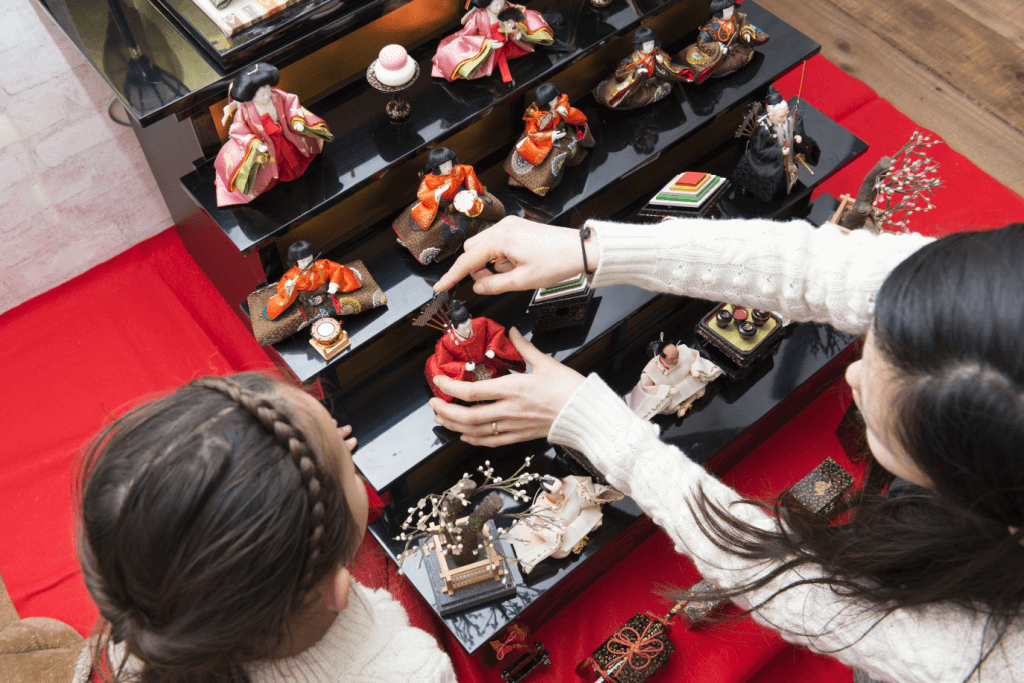
On the second story, three dolls and three maids (Sannin-kanjo) serve sake to the emperor and empress. The person in the center sits, and the two individuals on either side stand. Two takatsuki standing tables with circular, two-colored mochi sit in the middle of these three persons.
On the third story, there are five “Gonin-bayashi” dolls. Three play the drums, one the flute, and one sings. The two well-known ministers are on the fourth floor (Zuijin). On the fifth floor, there are three guardian dolls (Sannin-jichou).
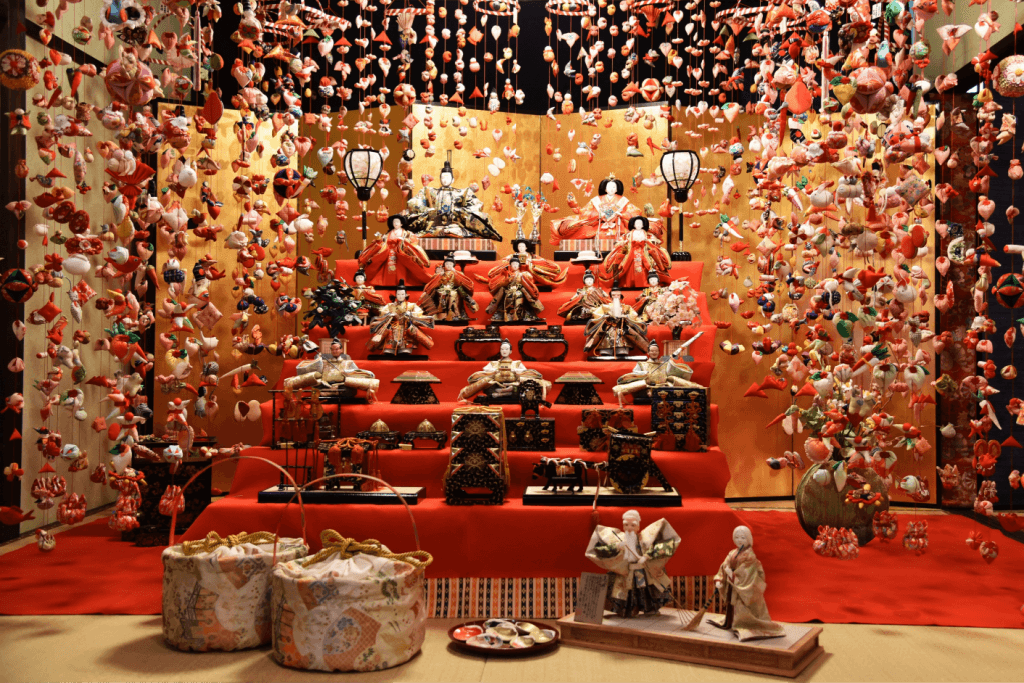
On each side, there is a pot with peach flowers and kumquats. You can adorn little furniture, tools, and carts on the sixth and lower floors. However, only a few families can afford the procedure on all seven tiers; most use a set where the first two floors are decorative.
Hinamatsuri Girls Day Treats
Hina Arare
Hina arare uses pink, white, and green rice in hue. Snow is white, cherry blossoms are pink, and the ground is green. In the spring, as the snow melts, grass sprouts from the ground, and cherry blossoms emerge. People in Japan believe that eating hina arare will give young girls natural vitality and help them grow well.
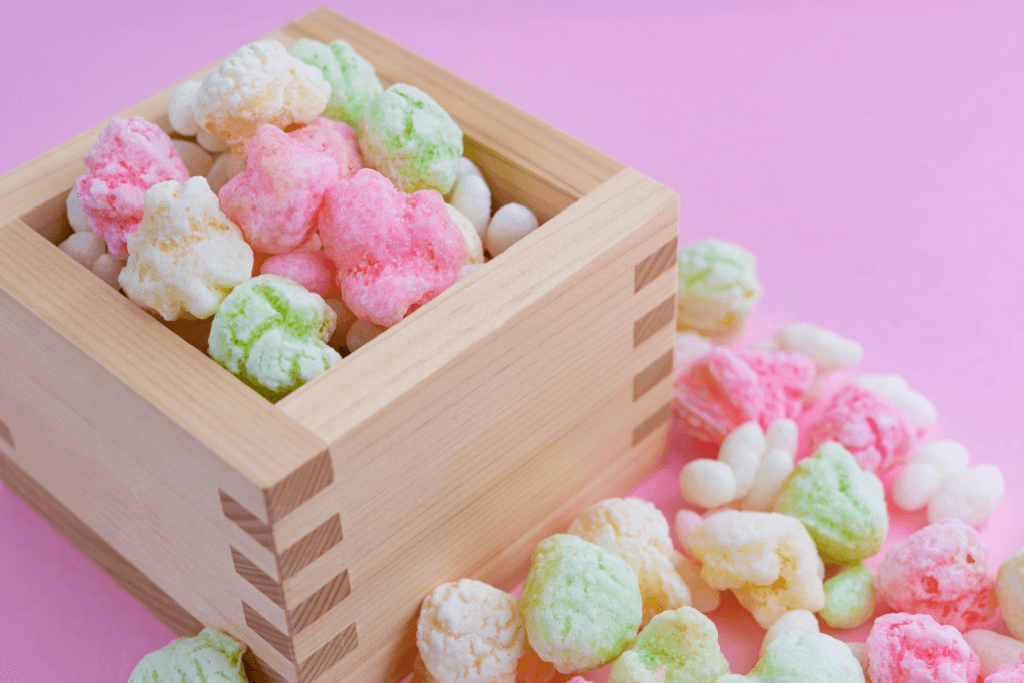
Kanto and Kansai have varied tastes. In Kanto, which includes Tokyo, Yokohama, and Chiba, sugar and a color called Pongashi are added to hot rice. Kansai, which includes Osaka, Kyoto, and Kobe, fries the rice seasoned with salt or soy sauce. However, where the two regions intersect, you can buy both types of hina arare. You can enjoy them as much as you’d like!
Hishi Mochi
Each formal event in Japan has a different type of mochi, and hishi mochi is the type of food presented as a gift during Hinamatsuri. Hishi mochi, like hina arare, is a diamond-shaped rice cake with layers of pink, white, and green.
There’s more to this dish than simple colors, however. The pink hue comes from gardenia flowers, the white comes from the water caltrop, while the green comes from mugwort. Mugwort, in particular, is a ubiquitous ingredient for wagashi, especially with daifuku.
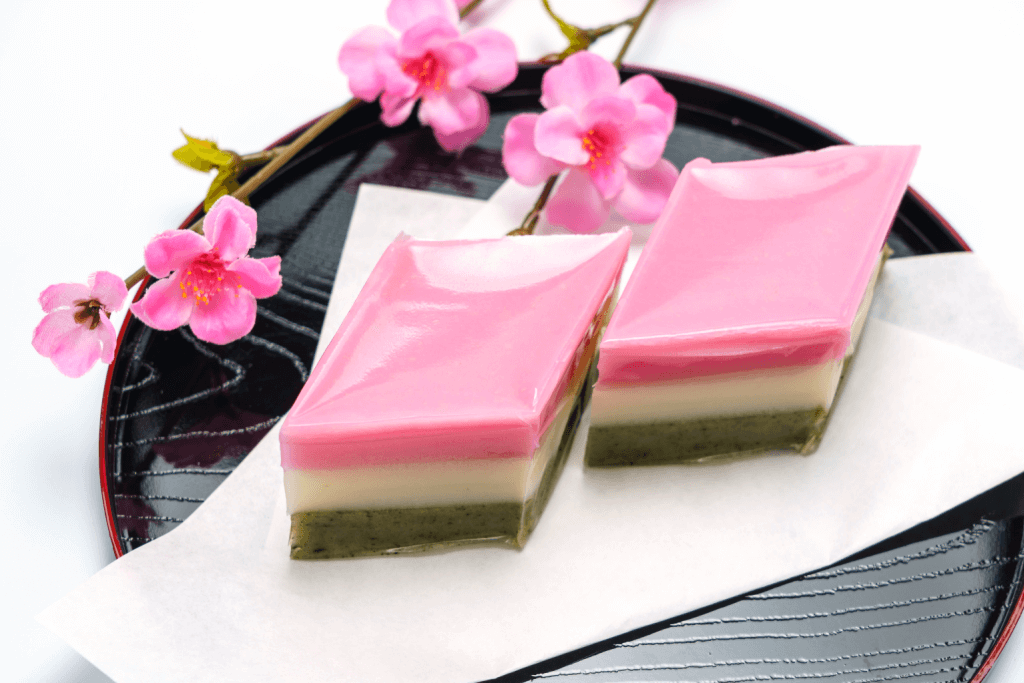
The colors of this mochi have the same connotation as the colors of hina arare. On New Year’s Eve, historic palaces served hanabiramochi, a flower petal rice cake. This, in turn, inspired the Hinamatsuri version of the wagashi.
Chirashizushi
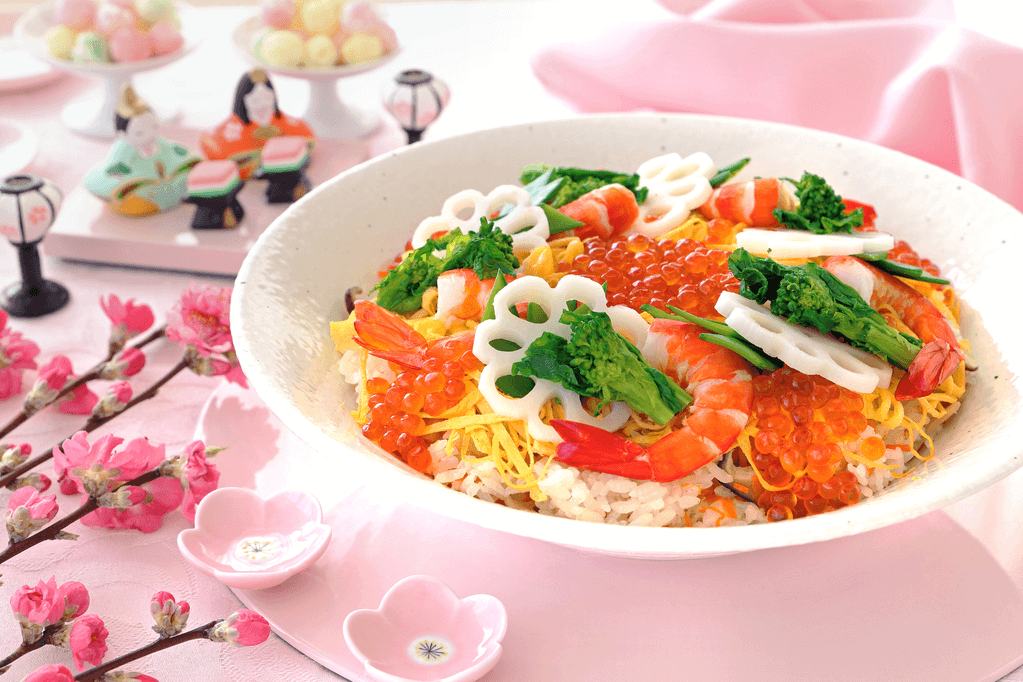
Different from sushi rolls, chirashizushi is a bowl of vinegar, sugar, and salt with sashimi and other colorful toppings. While the food itself is meaningless, the elements that go into it are. Shrimp, for example, expect to live long enough to develop a curled back like a shrimp, while lotus root represents a happy future.
Hamaguri Soup
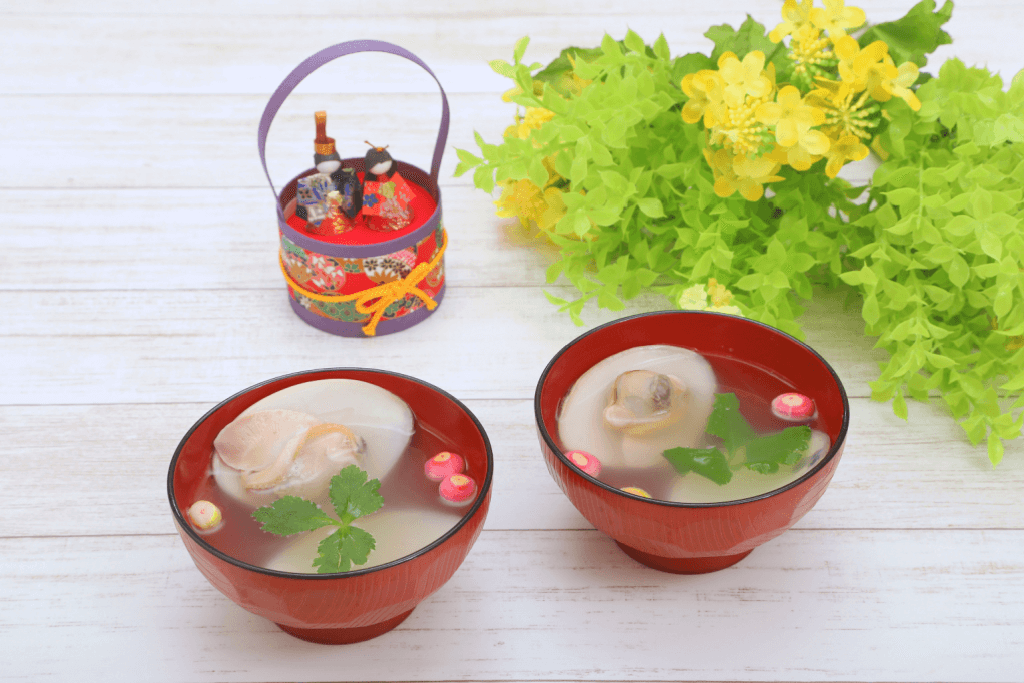
Another popular dish on Girls Day is hamaguri clam soup. Families use clams in place of hamaguri by many families (asari) for this dish. Because clams have two shells that perfectly fit together, this soup is a method for parents to express their wish that their daughter will find a suitable spouse. As a result, many believe that eating clam soup will result in a happy marriage.
Shirozake
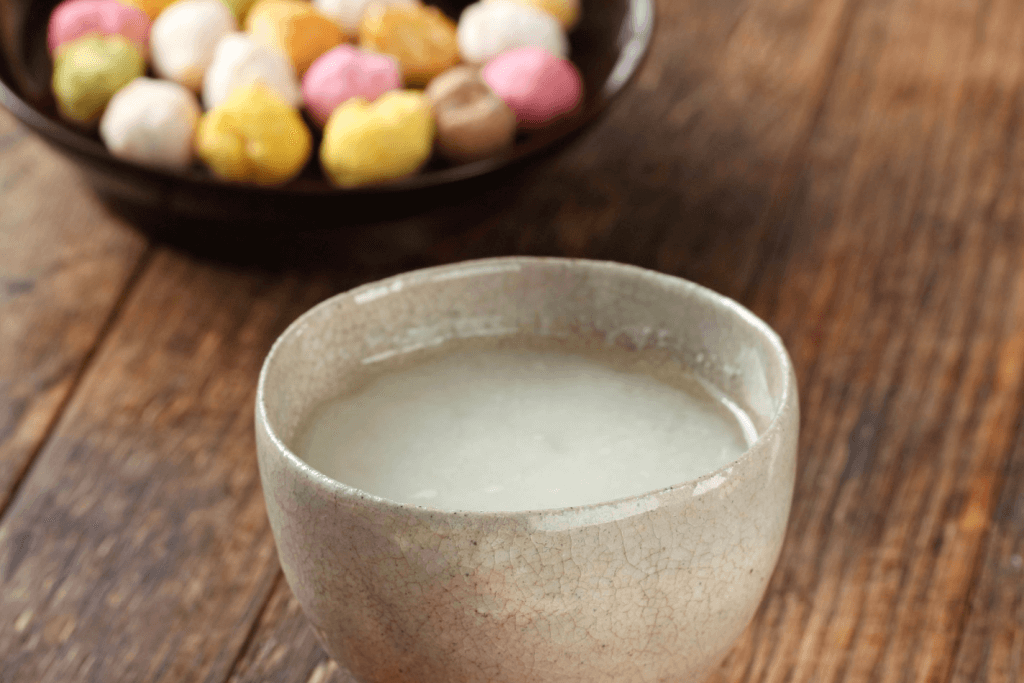
Shirozake, or “white sake,” is a sweet sake people enjoy during Girls Day. It’s similar to amazake, which is also gorgeous and white, but amazake contains very little alcohol, whereas shirozake has 8-9%. Nonetheless, an increasing number of people are drinking amazake instead, mainly because it contains less alcohol and may be enjoyed by even young children.
Hinamatsuri, like other traditional festivals, is a time to commemorate the changing seasons and the Japanese people’s hope for a peaceful and happy future for their children. It also aligns perfectly with the upcoming spring, a time for renewal for the whole family! Moreover, with cherry blossom season just around the corner, Girls Day is a perfect introduction to the new year!
Have you ever attended a Girls Day celebration? Is there a similar day for young children where you live? If so, please let us know in the comments area below!
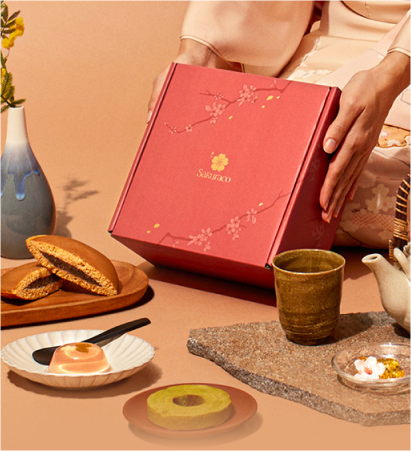
Discover authentic flavors with Sakuraco
Get Sakuraco 

Discover authentic flavors with Sakuraco
Get Sakuraco 
Related Articles
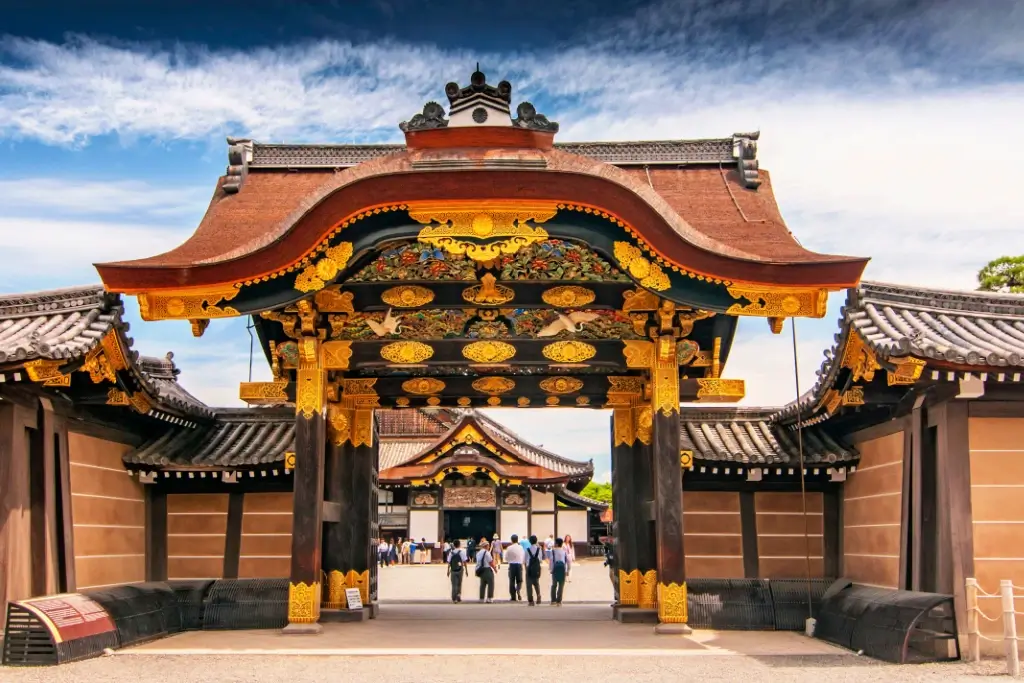
Nijo Castle and Other Hidden Gems in Japan!
Japan’s castles are beautiful and fascinating reminders of the nation’s past. More famous fortresses like Himeji and Osaka attract more visitors.
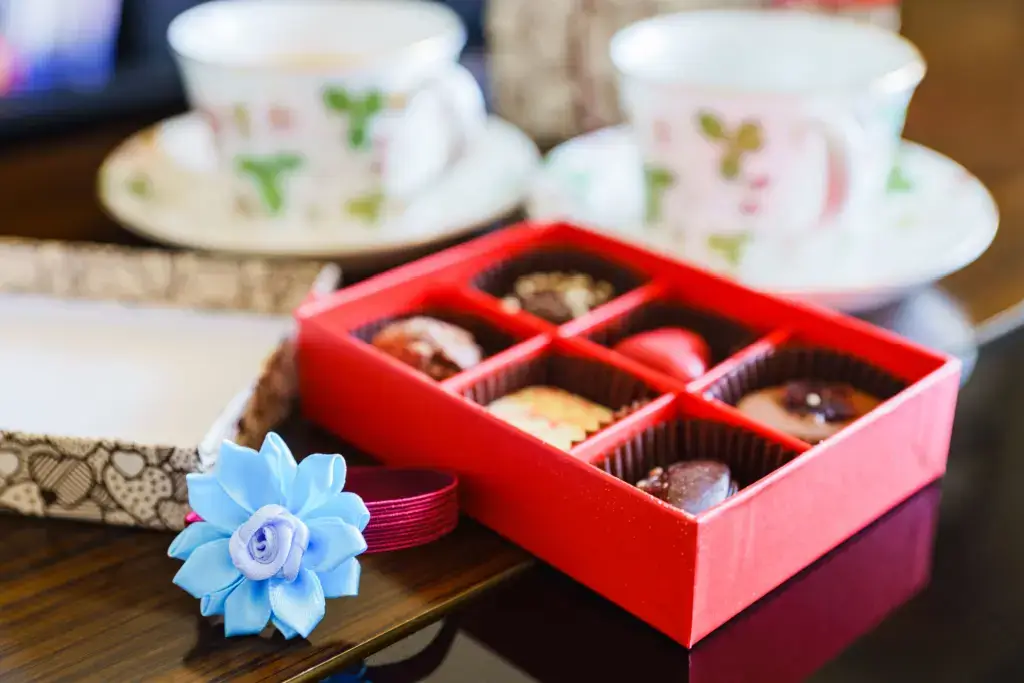
Valentine’s Day in Japan: The Ultimate Guide!
Valentine’s Day in Japan is a day when romance, tradition, and sweet gestures come together. On this special day, you can find signs of love and warm affection everywhere, from mythology and natural symbols to unique gifts embodying Japanese culture’s essence. These practices make Valentine’s Day a fantastic celebration of love in all its forms!

Kawaguchi City: A Hidden Gem in Saitama!
Kawaguchi City is a hidden treasure just north of Tokyo. While it may not be as famous as other Japanese cities, it offers history, culture, and nature! If you’re looking for relaxation or adventure, Kawaguchi has something special for everyone!
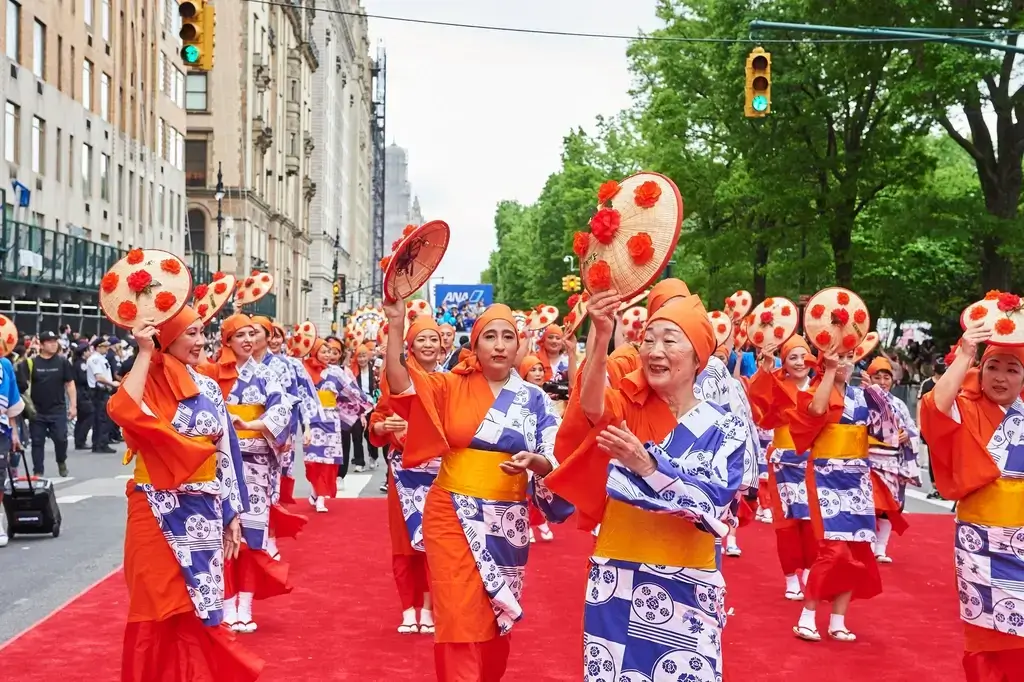
New York City and Japan: Five Places to Experience the Culture!
New York City, a global cultural melting pot, offers vibrant spaces where Japanese heritage thrives. We’ll also examine how these locations highlight the city’s rich multicultural tapestry!



